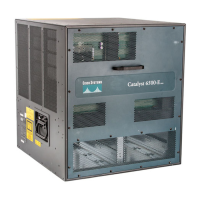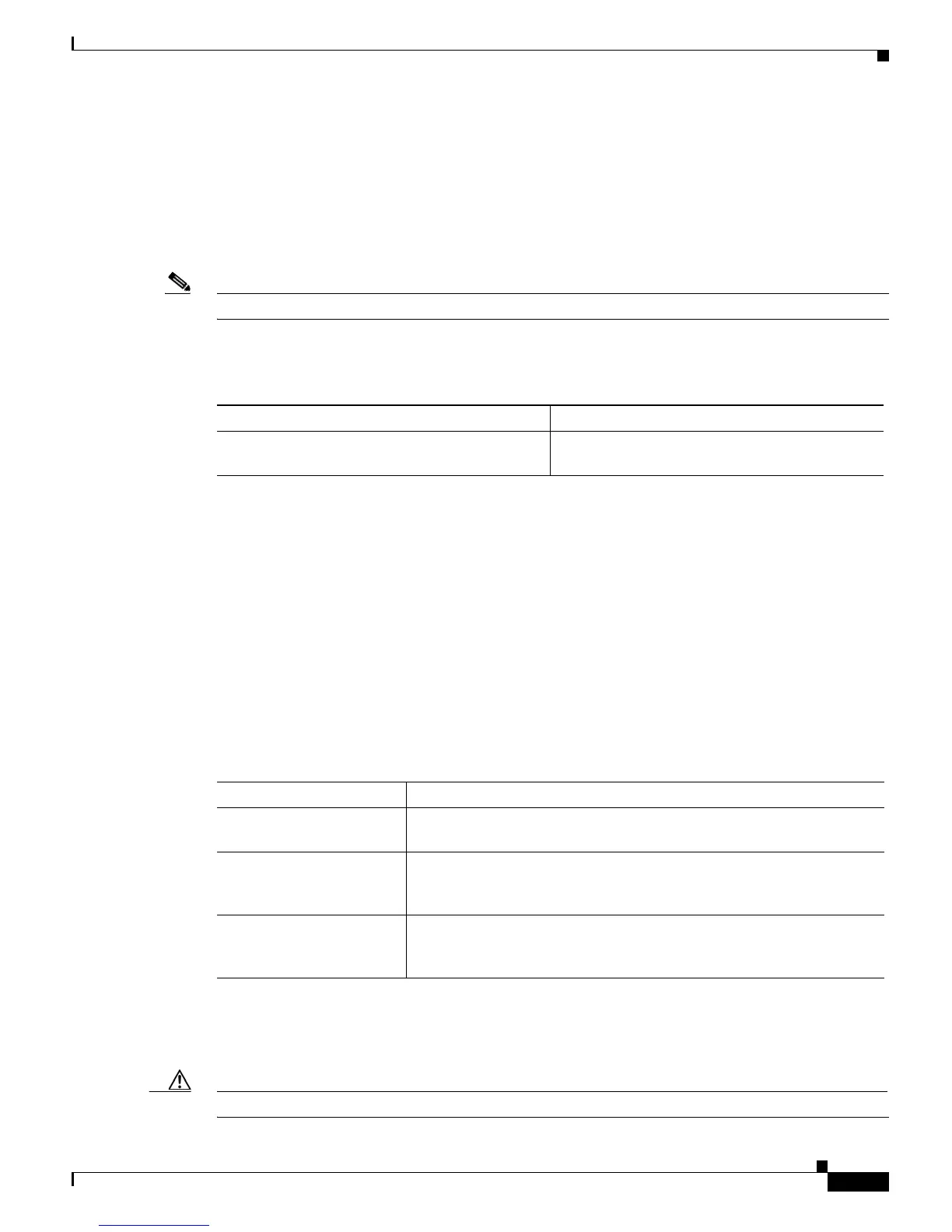18-7
Catalyst 6500 Series Switch Software Configuration Guide—Release 8.7
OL-8978-04
Chapter 18 Configuring MVRP
Configuring MVRP on the Switch
Configuring MVRP on Ports with STP Blocking State
To prevent Spanning Tree Protocol (STP) topology reconfiguration on a port that is connected to a device
that does not support Per-VLAN STP+ (PVST+), configure the MVRP active applicant state on the port.
The ports in the MVRP active applicant state send MVRP VLAN declarations when they are in the STP
blocking state, which prevents the STP bridge protocol data units (BPDUs) from being pruned from the
other port.
Note Configuring fixed registration on the other device’s port also prevents STP topology reconfiguration.
To configure an 802.1ak trunk port to send VLAN declarations when it is in the blocking state, perform
this task in privileged mode:
This example shows how to configure a group of trunk ports to send VLAN declarations when it is in
the blocking state:
Console> (enable) set port mvrp 4/2-3,4/9-10,4/12-24 applicant active
MVRP Applicant was set to active on port(s) 4/2-3,4/9-10,4/12-24.
Console> (enable)
Use the normal keyword to return to the default state (active mode disabled).
Configuring the MVRP Timers
An MVRP-enabled port uses the timers listed in Table 18-2 to transmit, receive, and respond to requests.
The leave time should be at least twice the join time to allow reregistration after a leave or leaveall
message, even if a message is lost. To minimize the volume of rejoining traffic generated following a
leaveall message, the leaveall time should be larger than the leave time.
Caution Set the same MVRP timer values on all the Layer 2-connected devices.
Task Command
Configure a trunk port to send VLAN declarations
when it is in the blocking state.
set port mvrp mod/port applicant {normal |
active}
Table 18-2 MVRP Timers
Timer Description
join The join timer defines the interval between transmit opportunities. The
value can range from 20 to 10000000, in centiseconds. The default is 20.
leave The leave timer defines the waiting time before transiting to an empty
state. The value can range from 60 to 10000000, in centiseconds. The
default is 60.
leaveall The leavall timer defines the frequency in which the leaveall message is
generated. The value can range from 1000 to 10000000, in centiseconds.
The default is 1000.

